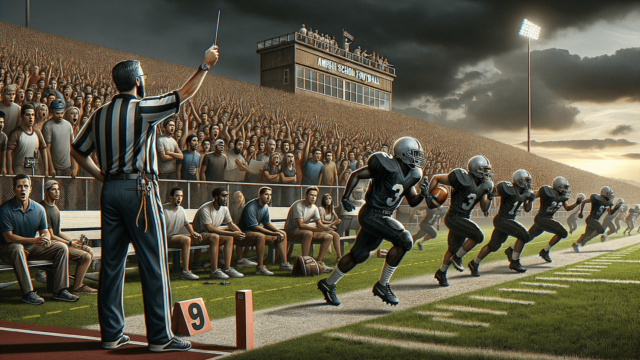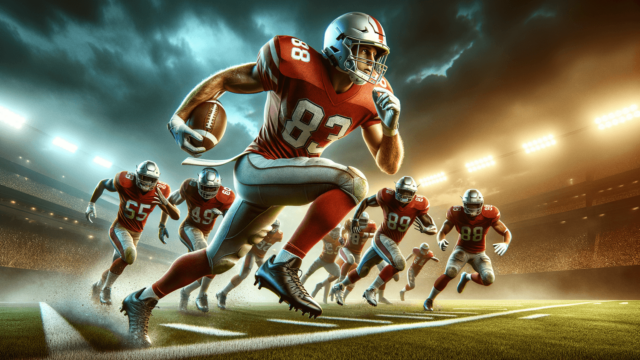
An ATH (Athlete) in football refers to a player with versatile skills who can be effective in multiple positions on the field. Often scouted for their natural athleticism and adaptability, these players offer strategic flexibility and bring added value to their teams.
Understanding the ATH in Football
An ATH (Athlete) in football is a player who possesses exceptional athletic abilities and versatility, allowing them to excel in multiple positions on the field. Coaches and scouts often seek out these multi-talented individuals to bolster the flexibility and overall performance of their teams.
ATH: A Valuable Asset on the Team
Having an ATH on a football team provides a strategic advantage, as the player can adapt to different positions according to the game situation and opponent. This ability to switch positions helps prevent mismatches and opens up various tactical options for the coaching staff.
Offensive Side
An ATH on the offensive side of the ball may play various roles, such as quarterback, running back, wide receiver, or tight end. Their athleticism allows them to be a viable threat in the passing, running, or return game, keeping the opposition guessing and adjusting.
Defensive Side
On the defensive side, an ATH can impact the game as a defensive back, cornerback, safety, or even a linebacker. Their size, speed, and ball-tracking abilities make them crucial in shutting down the opposition’s passing game and containing the run.
Identifying and Developing an ATH
To identify an ATH, scouts and coaches look for players with a combination of speed, strength, agility, and hand-eye coordination. These athletes tend to demonstrate natural football instincts and have a high football IQ, making them easier to coach and integrate into different positions.
Training Programs
To maximize the potential of an ATH, tailored training programs are put in place, focusing on both position-specific skills and overall physical development. These programs include strength and conditioning, speed and agility, and sport-specific skill workouts to help the player excel across multiple positions.
Examples of ATHs in Football
Notable examples of ATHs in football history include Deion Sanders – who played cornerback, wide receiver, and return specialist, and Kordell Stewart – who played quarterback, running back, and wide receiver. Their extraordinary contributions and thrilling performances demonstrate the value of an ATH in football.
The Impact of ATHs in College and High School Football
While ATHs are valuable assets on professional teams, their adaptability and athleticism often have an even more significant impact at the college and high school levels. Younger, developing athletes may not have fully-defined positions yet, allowing these ATHs to shine in multiple roles and help their teams achieve success.
Recruiting and Scholarship Implications
Due to their versatility and potential impact, ATHs are highly sought after by college programs during the recruiting process. A talented ATH may receive numerous scholarship offers from high-profile football programs, giving them significant opportunities to further their academic and athletic careers.
Advantages for Smaller Schools
Small football programs, with limited scholarships, can benefit significantly from the addition of an ATH to their roster. By recruiting a multi-position player, they effectively address several needs with a single recruit, helping the team become more competitive without exceeding the allotted scholarships.
Challenges for ATHs
While being an ATH in football presents numerous opportunities, it also brings unique challenges. Transitioning between positions can be mentally and physically demanding, which may lead to some potential downsides.
Mastering Multiple Positions
ATHs need to not only have physical prowess but also develop a deep understanding of each position’s responsibilities and nuances. Learning multiple playbooks and skill sets can be time-consuming and demanding. However, the results often speak for themselves when these talented individuals help their teams achieve victory.
Injuries and Burnout
The demands of playing several positions can be taxing on a player’s body, potentially leading to increased injury risk. Furthermore, the added pressure of consistent performance from the coaching staff and recruiters may cause some athletes to experience burnout mentally. Proper training, recovery, and support are essential for all athletes, including ATHs, to maintain peak performance levels.
FAQ Section
If you’ve just read our article on ATHs in football, you may have some questions regarding this unique athlete type. Here’s a list of frequently asked questions and their answers, which can help you better understand ATHs and their impact on the game of football.
What positions are usually covered by an ATH at the high school or college level?
An ATH may cover a variety of positions depending on their abilities and team needs. Common positions include quarterback, running back, wide receiver, tight end, linebacker, cornerback, and safety. The more adaptable the ATH, the greater their impact on both offensive and defensive strategies.
How does a coach determine which position an ATH should play?
A coach evaluates an ATH’s physical attributes, skill set, in-game performance, and position-specific knowledge to determine their ideal role on the team. The coach may also consider the team’s existing roster and the opposition’s strengths and weaknesses when making this decision.
Are there any risks associated with playing multiple positions as an ATH?
Yes, playing multiple positions as an ATH can lead to increased injury risk and burnout due to the mental and physical demands associated with mastering different roles. Proper training, recovery, and support are crucial for mitigating these risks and maintaining peak performance.
What characteristics make a player more likely to be considered an ATH?
A player with strong athletic abilities, such as speed, strength, agility, and hand-eye coordination, combined with a high football IQ, good instincts, and adaptability, is more likely to be considered an ATH. These players are coachable and can excel at multiple positions on the field.
Do all football teams utilize ATHs?
While not every team may have a designated ATH, the majority of football teams utilize players with versatile skills due to the strategic advantage they provide. A team’s success may depend on its ability to adapt and exploit specific match-ups, making adaptable players an essential component of modern football.
Featured Posts
- No pillar pages found.





